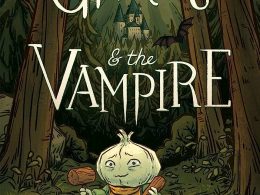Introduction:
One of the most thrilling aspects of storytelling is the plot twist. A well-executed plot twist can leave readers gasping in surprise, reevaluating everything they thought they knew about the story. It adds depth, excitement, and unpredictability to a narrative, making it an essential tool for writers. In this article, we will explore the art of the plot twist and discuss strategies to keep your readers on their toes.
1. Lay the Foundation:
A successful plot twist requires careful groundwork. As a writer, you need to establish a solid foundation for your story, creating a believable and engaging world for your readers. Introduce your characters, their motivations, and the conflicts they face. By setting up a strong foundation, you create a sense of familiarity that will make the eventual twist even more impactful.
2. Foreshadowing:
Foreshadowing is a powerful technique that can subtly hint at the upcoming twist without giving it away entirely. It builds anticipation and keeps readers engaged as they try to piece together the clues. Foreshadowing can be done through subtle hints, symbolic imagery, or even through the actions and dialogue of your characters. However, it’s important to strike a balance – too much foreshadowing can make the twist predictable, while too little can make it feel forced.
3. Subverting Expectations:
One of the keys to a successful plot twist is subverting your readers’ expectations. Take a familiar trope or storyline and give it a unique twist that defies conventional storytelling. This can be done by introducing a new perspective, revealing hidden motives, or turning a seemingly minor character into a major player. By challenging your readers’ assumptions, you keep them engaged and invested in the story.
4. Timing is Everything:
The timing of a plot twist is crucial. It should come at a point where readers are fully invested in the story but not expecting a major shift. Placing the twist too early can leave readers feeling disoriented, while placing it too late can make it feel rushed or tacked on. Experiment with different timings and consider the pacing of your story to find the perfect moment for your plot twist.
5. Emotional Impact:
A plot twist should evoke an emotional response from your readers. It can be shock, disbelief, sadness, or even joy. To achieve this, you need to create well-rounded characters that readers can connect with on an emotional level. When the twist occurs, it should have a profound impact on the characters and the world you’ve created. This emotional investment will make the twist resonate with your readers long after they’ve finished reading.
Conclusion:
The art of the plot twist is a delicate balance between anticipation and surprise. By laying a strong foundation, foreshadowing effectively, subverting expectations, timing the twist right, and creating emotional impact, you can keep your readers on their toes and deliver a memorable reading experience. Remember, a well-executed plot twist can turn a good story into a great one, leaving readers eagerly awaiting your next work. So go ahead, embrace the art of the plot twist and captivate your audience with your storytelling prowess.












